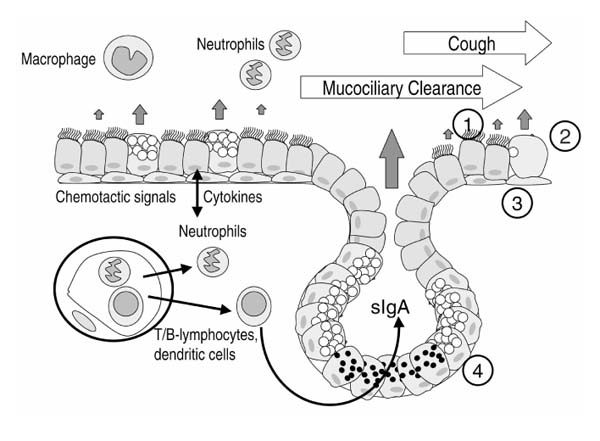Figure 1.

Host defense mechanisms of the respiratory epithelium. Coughing and cilia mechanically remove inhaled debris and microorganisms entrapped in mucus, a mechanism called mucociliary clearance. Multiple substances with proinflammatory and anti-inflammatory as well as antimicrobial activities are secreted by epithelial and inflammatory cells and function as effector substances of the innate immune system. Natural killer cells, dendritic cells, neutrophils, and macrophages represent the cellular components of innate immunity. Cells of the respiratory epithelium (1=ciliated cell, 2=goblet cell, 3=basal cell, 4=mucous and serous gland cells) are not passive bystanders of an inflammatory process but secrete effector molecules including antimicrobial peptides. The adaptive immune response with its T cells and B cells (sIgA=secretory immunoglobulin A) is triggered by innate mechanisms.
